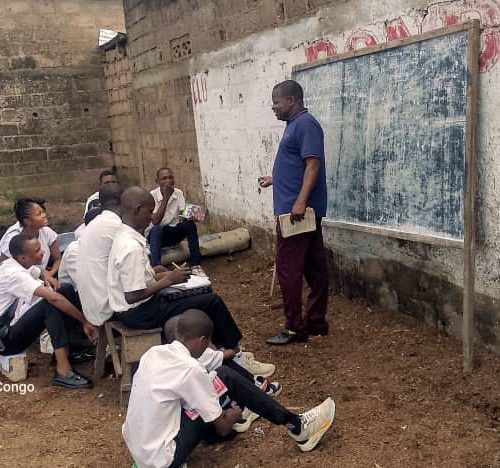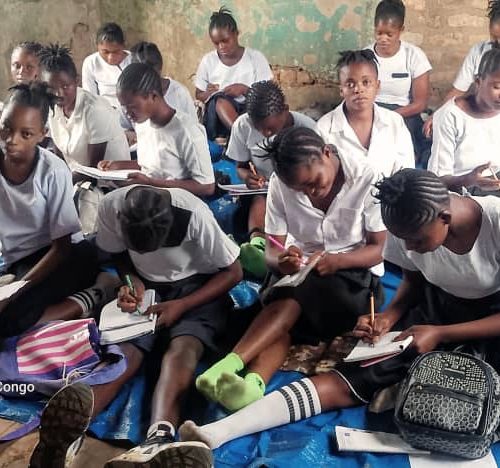Copyright © 2025 Hope Branham Trust Foundation. All Rights Reserved.
Contact Us
- 12325 Penson Street,Haslet Texas 76052 Texas, United States
Follow Us


Ensuring food security is a critical challenge faced by many communities worldwide. At the heart of this issue lies the need for sustainable farming practices and effective nutrition programs. The Hope Branham Foundation is dedicated to addressing food security through innovative and sustainable approaches that not only provide immediate relief but also create long-term solutions. This article delves into the importance of food security, the role of sustainable farming, and the impact of comprehensive nutrition programs.
Food security is defined as the availability of food and individuals' access to it. It is a fundamental aspect of human survival and well-being. Without adequate food, people cannot lead healthy and active lives. Food security encompasses three critical dimensions: food availability, food access, and food utilization.
Food availability refers to the presence of sufficient quantities of food on a consistent basis. This can be achieved through domestic production, imports, food aid, or a combination of these sources. Ensuring a stable supply of food is essential for preventing hunger and malnutrition.
Food access involves having the necessary resources to obtain appropriate foods for a nutritious diet. Economic access, which is the ability to purchase food, and physical access, which includes infrastructure and market availability, are key components. Social and cultural factors also influence food access.
Food utilization is the way the body uses the nutrients in the food consumed. This depends on proper food storage, preparation, and the diversity of the diet. Health and hygiene practices also play a significant role in ensuring that food intake leads to good health.
Sustainable farming practices are essential for long-term food security. These methods not only enhance food production but also protect the environment, improve soil health, and ensure the well-being of farming communities. Here are some key sustainable farming practices:
Organic farming avoids the use of synthetic fertilizers, pesticides, and genetically modified organisms (GMOs). Instead, it relies on natural processes and materials to enhance soil fertility and control pests. This method promotes biodiversity, conserves water, and reduces pollution, leading to healthier food and ecosystems.
Agroforestry combines agriculture and forestry to create more diverse, productive, and sustainable land-use systems. By integrating trees and shrubs into crop and livestock systems, agroforestry provides multiple benefits, including improved soil structure, enhanced biodiversity, and increased resilience to climate change.
Crop rotation involves growing different types of crops in the same area in sequential seasons. This practice helps maintain soil fertility, reduces pest and disease buildup, and improves crop yields. Diversification, on the other hand, involves cultivating a variety of crops simultaneously, which can enhance food security and reduce economic risks for farmers.
Conservation agriculture focuses on maintaining a permanent soil cover, practicing minimal soil disturbance, and diversifying plant species. This approach improves soil health, reduces erosion, and increases water retention, leading to more sustainable and productive farming systems.
Efficient water management is crucial for sustainable farming. Techniques such as rainwater harvesting, drip irrigation, and the use of drought-resistant crops help optimize water use and ensure that farming remains viable even in water-scarce regions.
Nutrition programs are vital for addressing food security and ensuring that people receive the nutrients they need for healthy living. These programs focus on improving dietary diversity, promoting healthy eating habits, and providing nutritional education and support.
School feeding programs provide nutritious meals to children, ensuring they receive the essential nutrients needed for growth and development. These programs not only improve children's health and academic performance but also encourage school attendance and retention, contributing to long-term educational and social outcomes.
Community nutrition education programs aim to raise awareness about the importance of balanced diets and healthy eating habits. These initiatives often involve workshops, cooking demonstrations, and the distribution of educational materials, empowering individuals and families to make informed food choices.
Micronutrient deficiencies, such as those of iron, vitamin A, and iodine, are common in many regions. Supplementation and fortification programs address these deficiencies by providing essential nutrients through supplements or by fortifying staple foods. These interventions significantly improve public health outcomes and reduce the prevalence of nutrition-related diseases.
Maternal and child nutrition programs focus on the nutritional needs of pregnant and breastfeeding women, infants, and young children. By providing targeted support during critical periods of growth and development, these programs help prevent malnutrition and ensure healthy futures for the next generation.
Advancements in technology play a pivotal role in enhancing food security. From improving agricultural productivity to enabling better supply chain management, technology offers innovative solutions to some of the most pressing challenges in food security.
Precision agriculture uses data and technology to optimize farming practices. By employing tools such as GPS, sensors, and drones, farmers can monitor crop health, soil conditions, and weather patterns in real-time. This enables precise application of inputs like water, fertilizers, and pesticides, resulting in higher yields and reduced environmental impact.
Digital platforms connect farmers with markets, providing them with access to information, resources, and buyers. These platforms can facilitate the exchange of knowledge, offer agricultural advice, and streamline the marketing and distribution of produce, thereby improving farmers' livelihoods and reducing food waste.
Biotechnology offers solutions to improve crop resilience and nutritional quality. Genetically modified crops, for example, can be engineered to withstand pests, diseases, and extreme weather conditions. Additionally, biofortification techniques enhance the nutrient content of crops, addressing micronutrient deficiencies in vulnerable populations.
Ensuring food security requires a multifaceted approach that combines sustainable farming practices, comprehensive nutrition programs, and technological innovations. The Hope Branham Foundation is committed to implementing these strategies to create resilient and food-secure communities. By working together, we can overcome the challenges of food insecurity and build a healthier, more prosperous future for all.
If you want to read more information about how to boost traffic on your Website just visit The Insider's Views.
Created with AIPRM Prompt "Write Best Article to rank on Google"
Access to reliable and sustainable energy is crucial for the development and well-being of communities, especially those in remote and underserved regions. Renewable energy projects are lighting up lives by providing clean, affordable, and reliable power to these communities, transforming their socio-economic landscape. This article explores the impact of renewable energy projects in remote communities, the technologies used, the challenges faced, and the success stories that inspire continued efforts in this vital area.
Renewable energy projects stimulate economic growth in remote communities. With access to reliable electricity, local businesses can operate more efficiently, new enterprises can emerge, and job opportunities can expand. Electrification can lead to improved productivity in agriculture, small-scale industries, and services, fostering economic resilience and reducing poverty.
Electricity enhances the quality of life by powering homes, schools, and healthcare facilities. Lighting enables children to study after dark, adults to pursue evening activities, and healthcare providers to deliver better services. Access to clean energy also reduces the reliance on harmful fuels such as kerosene, improving indoor air quality and overall health.
Educational institutions benefit significantly from reliable electricity. Schools can utilize electronic teaching aids, computers, and internet access, enriching the learning experience. Electrification enables evening classes and adult education programs, providing more opportunities for personal and professional development.
Healthcare facilities in remote areas often struggle with inadequate power supplies. Renewable energy can power essential medical equipment, refrigeration for vaccines, and lighting for evening and nighttime operations. This enhances the quality of healthcare services and improves patient outcomes.
Solar power is one of the most widely used renewable energy sources in remote communities. Solar panels convert sunlight into electricity, providing a sustainable and low-maintenance energy solution. Off-grid solar systems, including solar home systems and mini-grids, are particularly effective in remote areas where extending the national grid is not feasible.
Wind energy harnesses the power of wind to generate electricity through wind turbines. In areas with consistent wind patterns, wind turbines can provide a reliable and sustainable energy source. Hybrid systems that combine wind and solar power can ensure a continuous power supply, leveraging the strengths of both technologies.
Small-scale hydropower projects can effectively serve remote communities situated near rivers or streams. These projects convert the kinetic energy of flowing water into electricity, offering a reliable and renewable energy source. Micro-hydro systems are particularly suitable for remote areas, providing localized power generation with minimal environmental impact.
Biomass energy utilizes organic materials such as agricultural waste, wood, and animal dung to produce electricity or heat. Biomass projects can be tailored to the specific needs and resources of a community, providing a sustainable energy solution that also manages waste and reduces greenhouse gas emissions.
Remote locations often present geographical challenges such as difficult terrain and lack of infrastructure. These factors can complicate the transportation and installation of renewable energy systems. Technical challenges include ensuring the reliability and maintenance of the systems, especially in areas with limited technical expertise.
The initial investment required for renewable energy projects can be a significant barrier. Although renewable energy can offer long-term cost savings, the upfront costs for equipment, installation, and training can be prohibitive for remote communities and small-scale developers.
Inconsistent or unfavorable policies and regulatory frameworks can hinder the development of renewable energy projects. Supportive policies, incentives, and streamlined regulatory processes are essential for encouraging investment and facilitating project implementation.
Successful renewable energy projects require the active engagement and acceptance of the local community. This involves addressing concerns, providing education on the benefits of renewable energy, and ensuring that projects meet the specific needs and preferences of the community.
In Sub-Saharan Africa, numerous solar power projects have transformed lives in remote communities. For instance, the Solar Sister initiative empowers women entrepreneurs to distribute solar lanterns and solar home systems, improving energy access while creating economic opportunities. This project has illuminated thousands of homes, enabling children to study and families to carry out evening activities safely.
In the remote village of Dharnai in India, a community-based solar-wind hybrid system has revolutionized energy access. This project provides continuous power to homes, schools, and businesses, fostering economic growth and improving quality of life. The success of the Dharnai project has inspired similar initiatives across the country.
Nepal's rugged terrain and abundant water resources make it an ideal location for micro-hydro projects. The installation of micro-hydro plants in remote villages has provided reliable electricity, reducing dependence on traditional biomass fuels and enhancing local development. These projects have improved living standards and supported local industries.
In Kenya, the use of biomass energy has provided sustainable solutions for remote communities. Projects such as the installation of biogas digesters have converted animal waste into clean energy for cooking and lighting. This has improved health outcomes by reducing indoor air pollution and deforestation while providing a reliable energy source.
Renewable energy projects are lighting up lives in remote communities by providing sustainable, reliable, and affordable energy solutions. These projects drive economic development, improve quality of life, enhance education, and bolster healthcare services. While challenges exist, the success stories from around the world demonstrate the transformative power of renewable energy. The Hope Branham Foundation remains committed to advancing these initiatives, empowering remote communities, and fostering a brighter, more sustainable future.

Copyright © 2025 Hope Branham Trust Foundation. All Rights Reserved.
